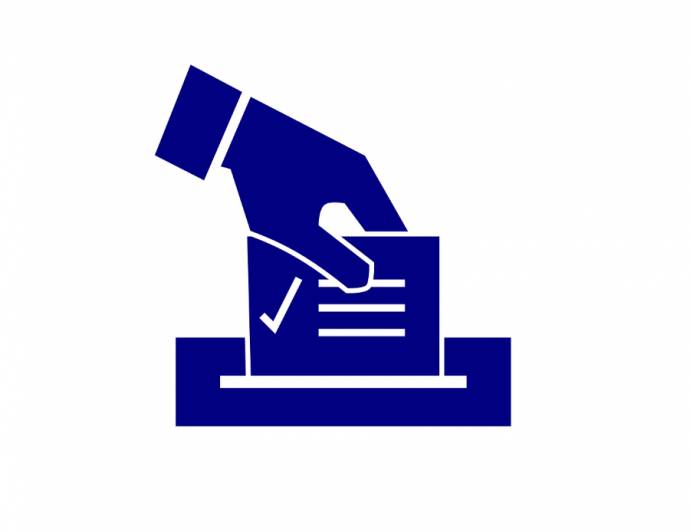STA, 12 November - Slovenian voters will head to the polls on Sunday to elect mayors and local councils in 212 municipalities. Coming less than half a year after the general election, the vote will be closely watched for signs of shifting political sentiment, but the results are likely to make for a poor barometer of the political climate in the nation.
For well over a decade, local elections have been dominated by truly hyperlocal issues, and 2018 does not look any different. In fact, judging by the candidacies and the handful of polls carried out, the vote may simply affirm trends that have become entrenched in the last decade-plus.
For one, large parties that are established at the national level do not necessarily perform well in local elections, with two constant exceptions: the Democrats (SDS) on the right and the Social Democrats (SD) on the left.
The SDS has won the last three local elections in terms of the total share of the vote for local council, while the SD has been near the top, finishing third in 2014, second in 2010 and third in 2006.
In 2006, the second strongest party was the Liberal Democracy (LDS), which has since disappeared from the political map, and in 2014 the runner-up position went to the then newly established Miro Cerar Party, since then renamed the Modern Centre Party (SMC).
The People's Party (SLS) has always done well and finished in fourth place in the last three elections, a feat achieved in 2014 despite having just been ejected from the National Assembly in what was a major upset for the once major political player.
In terms of the number of mayors, the SLS has been the undisputed leader, having the highest number of mayors of any party even in 2014, seemingly regardless of its fluctuating fortunes on the national political arena.
Local politics in Slovenia is a rural affair
These results reflect Slovenia's low rate of urbanisation, which is among the lowest in Europe, and the fragmentation of local communities.
The vast majority of Slovenia's municipalities are rural. Only 11 of the 212 qualify as urban, and the smallest among them has only 17,000 inhabitants.
In small rural communities, conservative parties tend to do well, and because there are so many small municipalities, centre-right parties have an upper hand by default when it comes to the sheer number of mayors.
But even more importantly, there has been a surge in independent and semi-independent parties and local lists, which have come to dominate the fragmented local political landscape.
In 2006, 67 mayors were elected from independent local lists. The figure rose to 70 in 2010 before exploding to 115 in the last election in 2014; that year, the SDS won 14.3% of the vote and had 31 mayors as the strongest individual party.
The trend is similar when one looks at the number of local councillors elected. In absolute terms strong parties such as the SDS have the highest number of local councillors, but independents have been gaining ground.
Independents accounted for just under 20% of all councillors elected in 2006 but 22% in 2010 and over 29% in 2014. Additionally, a tenth of councillors in each of those years was elected on the slates of smaller national or regional parties.
Another major trend driving Slovenian local elections has been the advantage of incumbency, which has been accelerating.
A 2015 study of local elections in Slovenia revealed that the rate of re-election rose from 77% in 1998 to over 80% in 2006 and as high as 84% in 2014.
As of 2018, ten of the 212 mayors have been in office for almost 24 years and many more have been mayors since their municipalities were first established (municipalities were created in several rounds in 1995, 1998, 2006 and 2011).
The incumbency advantage is so large that in as many as 36 municipalities, there is a single candidate for mayor, 35 of them being incumbents.
One major source of uncertainty disrupting these trends is the Slovenian tradition, especially on the left, of the rapid creation of parties, some of which tend to burn down fairly quickly.
In 2011, for example, the party of Ljubljana Mayor Zoran Janković won 28% of the vote in the general election. But, unable to form a government, the party pretty much collapsed in time for the 2014 local election and won just 0.25% of the votes for local council.
In 2014, on the other hand, the newly established SMC profited from its win in the general election to finish second by the share of the local council vote. Nevertheless, it did not manage to get a single mayor elected despite fielding candidates in 40 municipalities.
This year, it is the prime minister's Marjan Šarec List (LMŠ) that is in a unique position. It finished as runner-up in the spring general election with 12.6% of the vote, half of what the election winner, the SDS, received, and then managed to put together a five-party coalition.
But the party has its roots as a local player in Kamnik, where Šarec served as two-term mayor, and it has not yet built up a network of local chapters, which are seen as key for any party planning to become a serious player at the local level.
The LMŠ plans to field candidates in just 40 municipalities while also backing several candidates of other parties.
Given these trends, it seems likely that the SDS, SD and SLS may once again emerge as the strongest parties in the nation-wide tally, but independents, especially incumbents, are just as likely to affirm or even extend their dominance.
In the end, the results will probably give many players a cause for celebration. Some will brag with the number of mayors and local councillors, others will celebrate their outsize influence at the local level, and some will be happy with anything short of disaster.
You can find our guides to all the main political parties here







